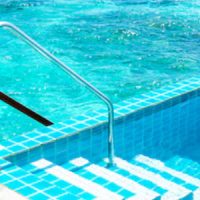Not All Drowning Happens in the Water

You don’t have to be a lifeguard or a doctor to know that in order to drown, there has to be some exposure to water. But many people aren’t aware of a phenomenon known as dry drowning. Although it seems paradoxical, this is a real thing—and facilities, lifeguards, or other areas that monitor swimmers—especially youth or the elderly—need to be aware of what dry drowning actually is.
Dry Drowning
You don’t have to be in the water to drown. Although this seems nonsensical, water can often get into a victim’s air passageways, such as the nose or mouth. The victim is able to get out of the water, but the water that ends up trapped in the breathing passageways can give the feeling of drowning, even outside of the water.
Unlike normal drowning, where water enters the lungs, with dry drowning, the water is closing off the breathing passageways in the head, and never actually reaches the lungs.
The droning sensation may be immediate, but it often is not. Or it may be a one time quick ingestion of water, where the victim coughs and struggles, but then, is seemingly fine and breathing normally.
To react to the inability to breathe, the body will send fluid into the victim’s lungs. That fluid buildup may not manifest itself for hours, or even days later. In fact, excessive fluid buildup in lungs is exactly what a pulmonary edema is—a very well known and deadly condition.
Secondary Drowning
Sometimes, the water we ingest while in a pool or in the ocean, does enter the lungs. Again, the person may be able to get out of the water, and may seem just fine. But the water that has gotten into the lungs, can wash away lubricant that the body uses to keep lungs from sticking together. In response, the body needs to lubricate the lungs, so it sends fluid to the lungs, again, causing fluid buildup in the lungs, which can be deadly. This is sometimes known as secondary drowning.
Facilities Need to Monitor Swimmers
All of these conditions mean that people who you suspect may have ingested water, need to be monitored closely—sometimes, for days after a near drowning incident. Young children are especially prone to ingesting water even through play.
Needless to say, any trouble breathing, or discomfort in the lungs or while breathing, should be addressed immediately if it happens hours or even a few days after being in the water. Even simple congestion which is otherwise unexplained (that is, not caused by an illness) should be addressed—if a child is coughing excessively hours or a day after exposure to water, medical attention may be necessary.
Many facilities that monitor children, like day camps, day care, schools, athletic organizations or recreational centers, may not be aware of this, and can easily overlook these symptoms, leading to tragedy for a condition that could have been remedied with proper and timely medical attention.
Call the Knoxville personal injury lawyers at Fox Farley Willis & Burnette, PLLC, today if you or someone you know has been injured in a pool, or in water–lifeguards, gyms, property owners or facilities may be liable for any drowning related events.
Sources:
mana.md/should-i-worry-about-dry-drowning-and-secondary-drowning/#:~:text=The%20symptoms%20of%20dry%20drowning%20begin%20almost%20immediately%20after%20a,%2C%20chest%20pain%2C%20and%20lethargy.
webmd.com/children/features/secondary-drowning-dry-drowning











